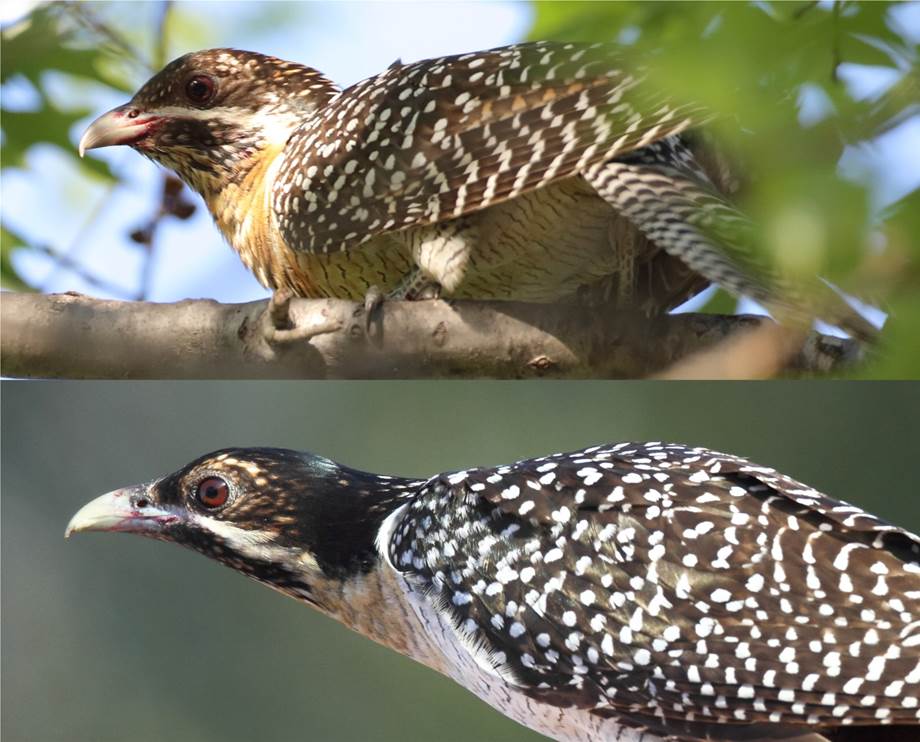Definitely, I’d think Philip. Above is a F (apparently young) I snapped yesterday in the pinoaks, below an older F from 2010. I assume the younger birds are
breeders, but have no evidence of that.

From: Philip Veerman [
Sent: Monday, 8 January 2018 10:19 AM
To:
Subject: RE: [canberrabirds] Koels
I have also observed a female Koel in this transition plumage. I am wondering if this is a statement of the obvious that females show similar transitions, just
not as obvious as males show. Sorry I don’t do photos. I haven’t commented much on Koels but there are something close to 5 Koels around my GBS area most days, usually yelling from at least 5:30 a.m., not much of the “name” call, more the other calls. I have
not yet noted any young this year.
Philip
From: Geoffrey Dabb
Sent: Monday, 8 January, 2018 9:22 AM
To:
Subject: FW: [canberrabirds] Koel's
That’s a good informative photo Shorty. Your bird bath must have done good business yesterday. With Steve’s and mine it gives an indication of the plumage
variation in returning 2nd year (end of first year) males. A question is: what proportion of our arrived males are in that category? You need to get a good look to make an assessment, and I would regard just a few aberrant buff tips in the wing
as older birds. From my observations I would say less than half but possibly more than one quarter.
From: shorty
Sent: Monday, 8 January 2018 6:47 AM
To:
Subject: [canberrabirds] Koel's
Last week i had 4 adults in the morning that appeared to be fighting over the territory. On that afternoon a Red Wattlebird was feeding a young Koel.
Yesterday i had a male and female come to my birdbath for a drink. Photo of male attached.

